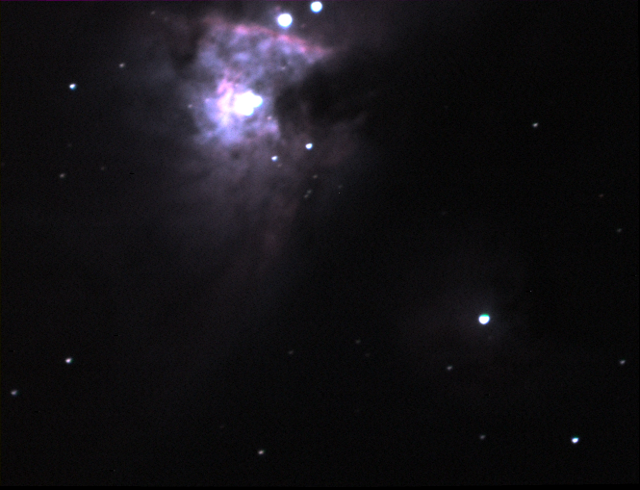New astrophoto CCD – first successful image
 Back in December I picked up a new CCD imager for my telescope. Prior to this I had been using my DLSR to take astrophotos and with an upcoming course requiring an actual astronomical CCD imager it seemed like a good time to take the plunge. Now the imager I wanted the SBIG ST7ME was a bit out of my price range for the time frame I had so I ended up going with the monochrome Orion Starshoot III . The Starshoot III has a larger sensor than the ST7ME (1392x1040 pixels vs 784 x 520 pixels) but lacks the second auto guiding sensor. It also costs, with a 5 filter magazine, about $1000 less than the ST7ME so it's the imager I went with.
Back in December I picked up a new CCD imager for my telescope. Prior to this I had been using my DLSR to take astrophotos and with an upcoming course requiring an actual astronomical CCD imager it seemed like a good time to take the plunge. Now the imager I wanted the SBIG ST7ME was a bit out of my price range for the time frame I had so I ended up going with the monochrome Orion Starshoot III . The Starshoot III has a larger sensor than the ST7ME (1392x1040 pixels vs 784 x 520 pixels) but lacks the second auto guiding sensor. It also costs, with a 5 filter magazine, about $1000 less than the ST7ME so it's the imager I went with. Now the imager arrived just before the holidays so I didn't have a lot of time to play with it until the end of December. Since then I've had three attempts at astro-imaging with the imager. The first two attempts weren't quite successful as focusing a camera that lacks a viewfinder is a bit of a challenge. With further reading of the owner's manual a better way to achieve focus was discovered and I gave it a try last evening from my backyard pier.
I did manage to get reasonable focus this time, though the seeing wasn't the best (a Chinook had rolled into town) and with the telescope, imager and Crayford focuser my mount is at it's weight limit so the tracking isn't the best, limiting me to 15 second shots. In any event, the result of this third attempt is here (click image to enlarge:
Now the equivalent exposure is 45 seconds, so it's three 15 second shots stacked. The three were the ones that were usable from a batch of 25 shots. Further it is a composite of four stacked images, one each for luminance, red, blue and green filters as below:
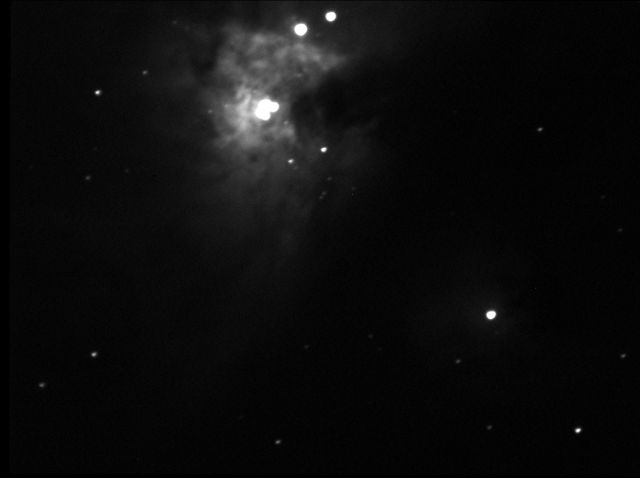
Luminance filter
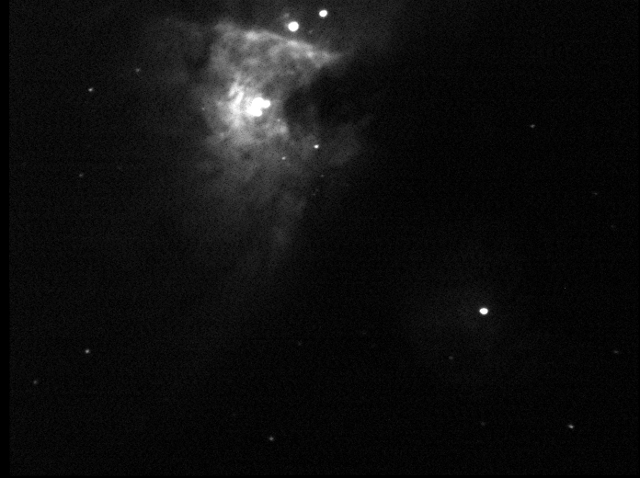
Red filter
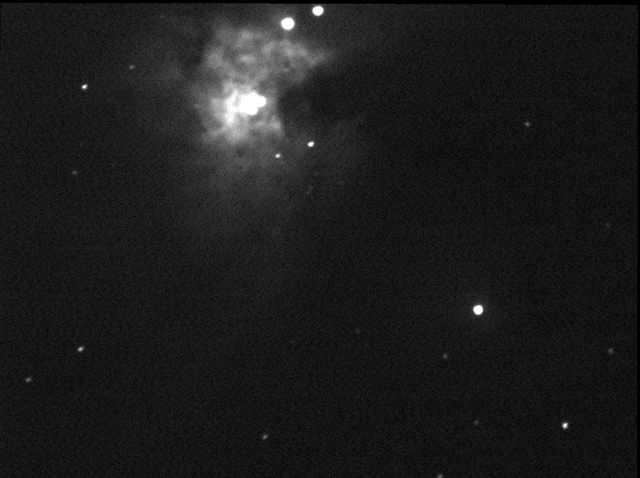
Green filter
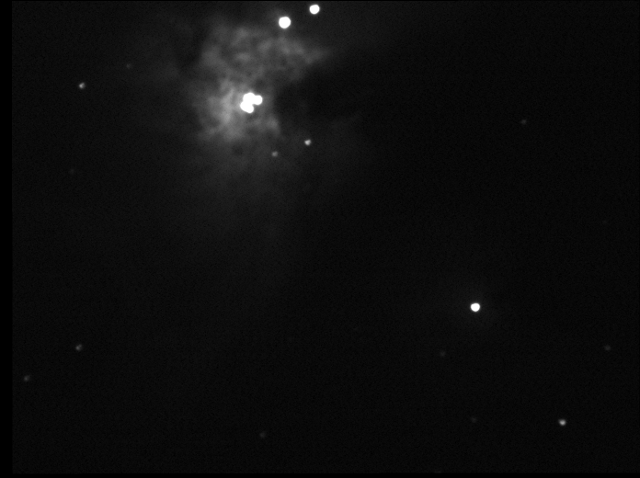
Blue filter
The various filters are needed because the imager is monochrome. This is different from a colour imager which has microscopic filters over each pixel on the CCD chip to do a colour RGB image in one shot. With a monochrome imager three shots are needed to produce a colour image. A fourth, luminance shot can be used to provide detail to the image. In my case the luminance filter allows only visible light through, blocking infra-red light from the atmosphere. It is possible to use other filters such as H-alpha as a luminance filter to provide other details.
This means the colour image above is the result of 12 separate images stacked and combined. Again, there were 25 images per filter originally, the best three in each used for the image. Now all I need is some time, clear skies and more practice!
[update]
I occurs to me that I forgot to mention the other pertinent details of the photo, specifically the object imaged is M42, the Great Nebula in Orion. It was imaged from my back yard using my Skywatcher Mak127.[/update]

